Description of the Matilda pumpkin variety, features of cultivation and care
Pumpkin Matilda f1 bred by breeders of Holland (agricultural company Enza Zaden). Gardeners in more than 90 countries plant it on their plots. It is characterized by unpretentiousness to weather conditions and care, as well as high productivity.
Characteristic
Matilda f1 is an early ripe hybrid. The ripening period of the first fruits begins approximately 100–105 days after the seeds are planted in the ground. This plant has a powerful bush. Vine stems reach a length of about 4–4.5 meters. One bush can grow 8-9 fruits weighing 2-3 kg. To ensure a higher weight of the pumpkin, it is recommended to cut off the flowers, leaving no more than 3-4 ovaries on one plant.
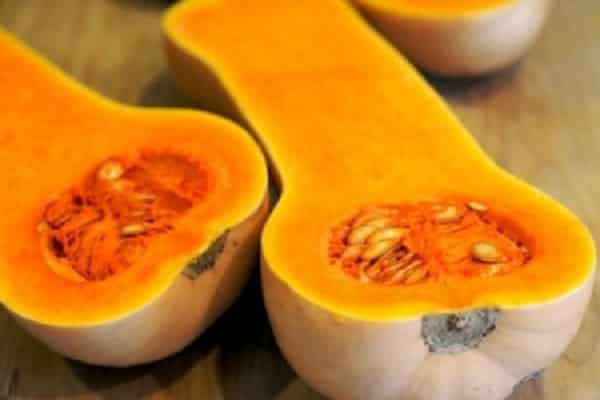
The description emphasizes that this is a fairly productive hybrid, with 1 m2 you can collect up to 15 kg of fruit. Pumpkin variety Matilda f1 can be in the shape of a pear, an elongated club, or in the form of a fruit with a constriction. The upper rind is quite dense. It can be pink to mustard. The ribbing is more pronounced near the peduncle.
The flesh of this hybrid is oily with a bright orange color. When cut, ripe fruit emits a pleasant nutty aroma. This pumpkin has a high taste. Unripe fruit pulp is pale without a characteristic aftertaste.
The seed chamber is located in the wider part of the pumpkin. The number of seeds is minimal, in some fruits they are absent.
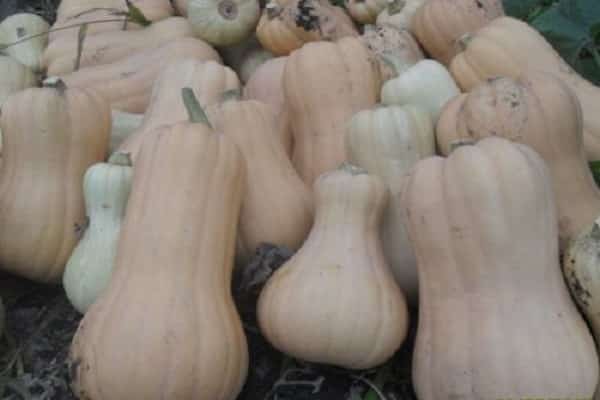
Purpose of fruits
Matilda pumpkin is used for cooking cereals, soups or for baking. Delicious desserts are made from its pulp. It is suitable for filling. It is also added to dough for baking.
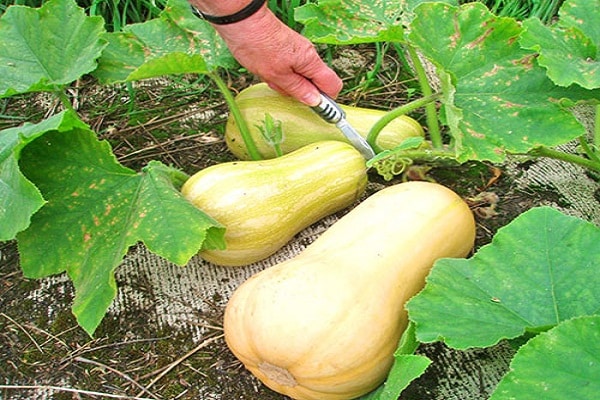
Positive aspects of pumpkin and its disadvantages
Judging by the reviews of gardeners, this vegetable meets the declared characteristics. But in order to get a richer harvest, a number of agrotechnical measures should be envisaged.
The most characteristic advantages of Matilda f1:
- high productivity even at low air temperatures;
- excellent taste;
- the ability to withstand temperature changes;
- early maturation;
- the minimum number of seeds in fruits;
- resistance to disease.
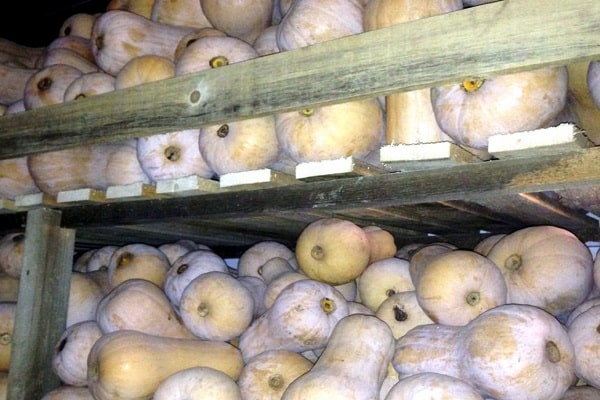
Most pumpkin varieties are influenced by weather conditions and ambient temperatures, but Matilda will delight you under any conditions.
There is only one drawback of this hybrid - the inability to independently obtain Matilda pumpkin seeds for their subsequent sowing in your garden.
Agricultural rules
Subject to the methods of agricultural technology provided for this type of vegetables, high yields are harvested. Main principles growing pumpkin:
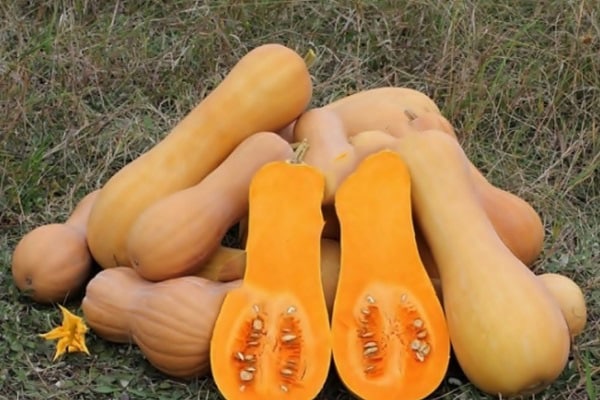
- the beds should be located in a sunny area;
- in areas with cool climatic conditions, pumpkin is grown using a seedling method;
- timely weeding, feeding and watering is necessary.
It should also be borne in mind that pumpkin will not show high yields on infertile soils. It grows well on compost heaps or on specially constructed "warm" beds.
The soil for the pumpkin is prepared in the autumn. It is dug up, and the following fertilizers are applied at the rate of 1 m2: rotted manure (5–6 kg), superphosphate (about 50 g).

How to properly prepare seeds before planting?
For Matilda f1 pumpkin seeds, no pre-planting preparation is required, because the seeds of any hybrids are sold after preparation for sowing.
For growing seedlings, shallow containers of different sizes are used. Seeds are sown in the last days of April. But for different regions, this time depends on climatic conditions.
The main conditions for planting seedlings in the ground are that it reaches 3-4 weeks of age, as well as warming up the soil to a temperature of + 14-15 degrees. It is desirable that by the time the seedlings are planted in the ground, there is no chance of frost return. Planting of Matilda in the southern regions is carried out by seeds directly on open beds.
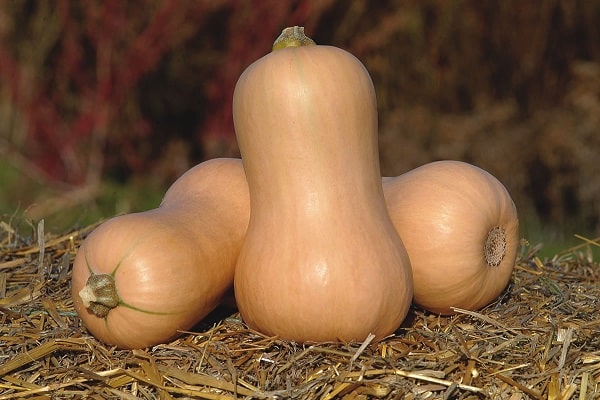
Required care
Before planting in the ground, pumpkin seedlings are hardened for 1 week. For this purpose, containers with plants are taken out onto the terrace or loggia. Hardening is carried out gradually, starting to take the seedlings out into the open air for 2-3 hours, gradually increasing this time.
Seedlings are planted in the ground 1 meter apart, the same distance is left in the aisles. With a thicker planting, the plants may lack nutrients. A dense planting interferes with the free growth of vines, which affects the yield of the hybrid. In addition, pests may appear on dense plantings, or the plant will get sick.

Irrigation mode
The planted pumpkin seedlings are immediately watered. The next watering is carried out only after 10 days. This stimulates the growth and development of the root system. Subsequently, watering is carried out once a week.
Water consumption per 1 m2 - 5-6 liters. After the pumpkin has bloomed and the fruits are poured, watering is carried out about 4-5 days, 10 liters of liquid per 1 m2... The water should be poured at the root so that the spray does not fall on the leaves and flowers.
Some people make a furrow around the plant to fill it with water. This allows not only to use it economically, but also contributes to the maximum access of moisture to the root system.

Conducting dressings
During the season 2–3 feeding planted pumpkin... At the same time, mineral fertilizers, ash and mullein are introduced. On soils with insufficient fertility, the amount of fertilizing can be increased. Before the appearance of flowers, the pumpkin is fed with nitrogen fertilizers, and after the appearance of the ovary, phosphorus and potassium fertilizers are applied.
Excessive fertilization will also negatively affect the development of the vegetable. In this case, there may be an excessive growth of green mass, and a small amount of flower and ovary formation.
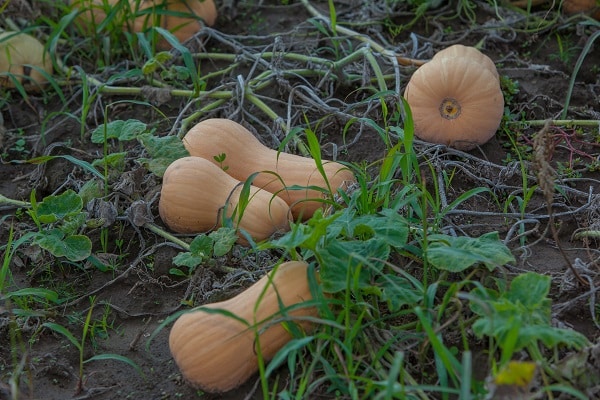
Harvesting
Ripe fruits are harvested in mid-August. To determine the maturity of the fruit, first of all, it is necessary to pay attention to the color of the peel, it must have the color typical for this hybrid. The stalk dries out and hardens completely, and the stems turn yellow and dry out.
The harvested fruits can be stored for about 4 months. Many people note that after 2-3 months the pumpkin acquires a richer taste and aroma.

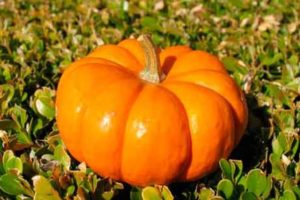
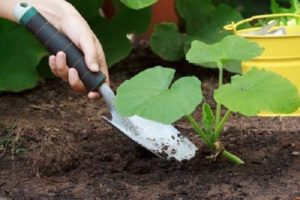
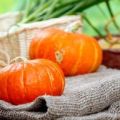

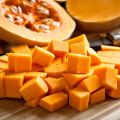



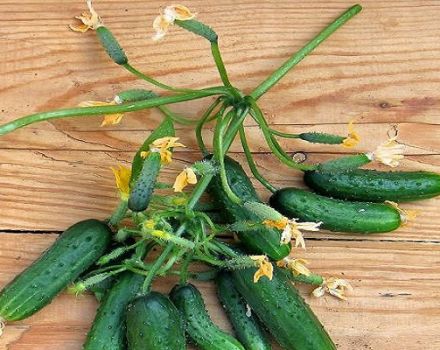

I only grow this pumpkin, it is sweet and very aromatic. It is completely unpretentious in care, therefore I use only mineral fertilizers and a bioactivator of growth "BioGrow».